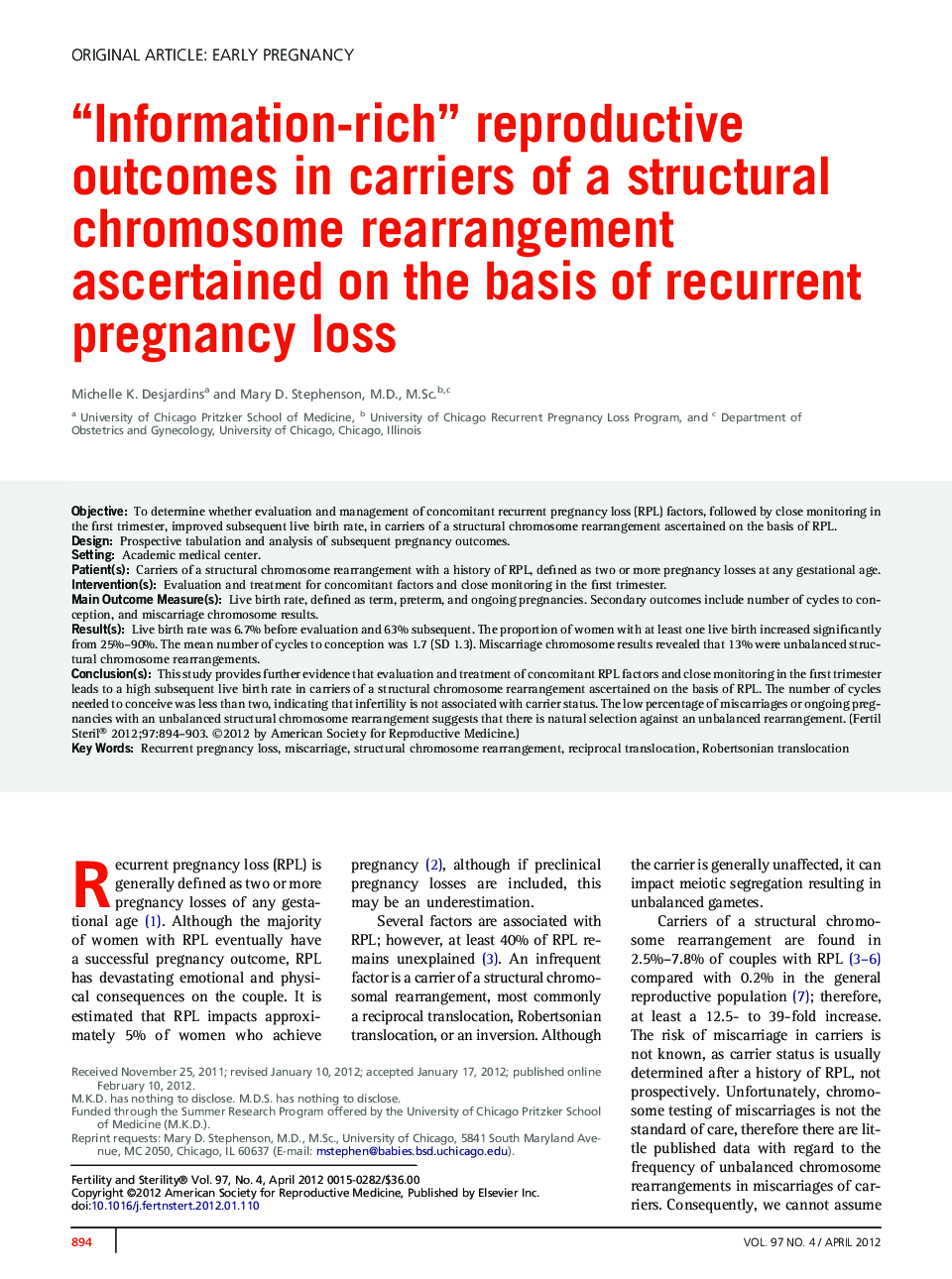| Article ID | Journal | Published Year | Pages | File Type |
|---|---|---|---|---|
| 3938823 | Fertility and Sterility | 2012 | 10 Pages |
ObjectiveTo determine whether evaluation and management of concomitant recurrent pregnancy loss (RPL) factors, followed by close monitoring in the first trimester, improved subsequent live birth rate, in carriers of a structural chromosome rearrangement ascertained on the basis of RPL.DesignProspective tabulation and analysis of subsequent pregnancy outcomes.SettingAcademic medical center.Patient(s)Carriers of a structural chromosome rearrangement with a history of RPL, defined as two or more pregnancy losses at any gestational age.Intervention(s)Evaluation and treatment for concomitant factors and close monitoring in the first trimester.Main Outcome Measure(s)Live birth rate, defined as term, preterm, and ongoing pregnancies. Secondary outcomes include number of cycles to conception, and miscarriage chromosome results.Result(s)Live birth rate was 6.7% before evaluation and 63% subsequent. The proportion of women with at least one live birth increased significantly from 25%–90%. The mean number of cycles to conception was 1.7 (SD 1.3). Miscarriage chromosome results revealed that 13% were unbalanced structural chromosome rearrangements.Conclusion(s)This study provides further evidence that evaluation and treatment of concomitant RPL factors and close monitoring in the first trimester leads to a high subsequent live birth rate in carriers of a structural chromosome rearrangement ascertained on the basis of RPL. The number of cycles needed to conceive was less than two, indicating that infertility is not associated with carrier status. The low percentage of miscarriages or ongoing pregnancies with an unbalanced structural chromosome rearrangement suggests that there is natural selection against an unbalanced rearrangement.
